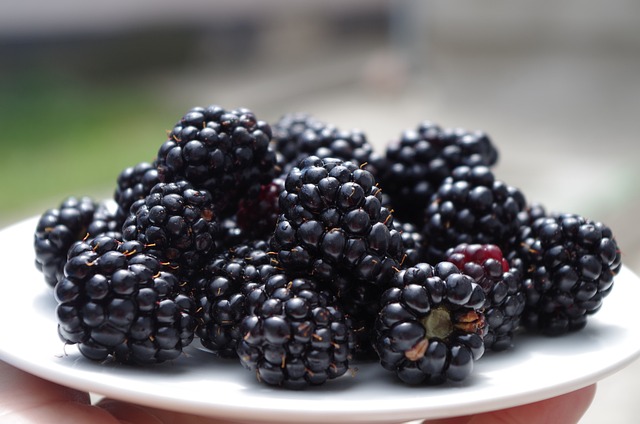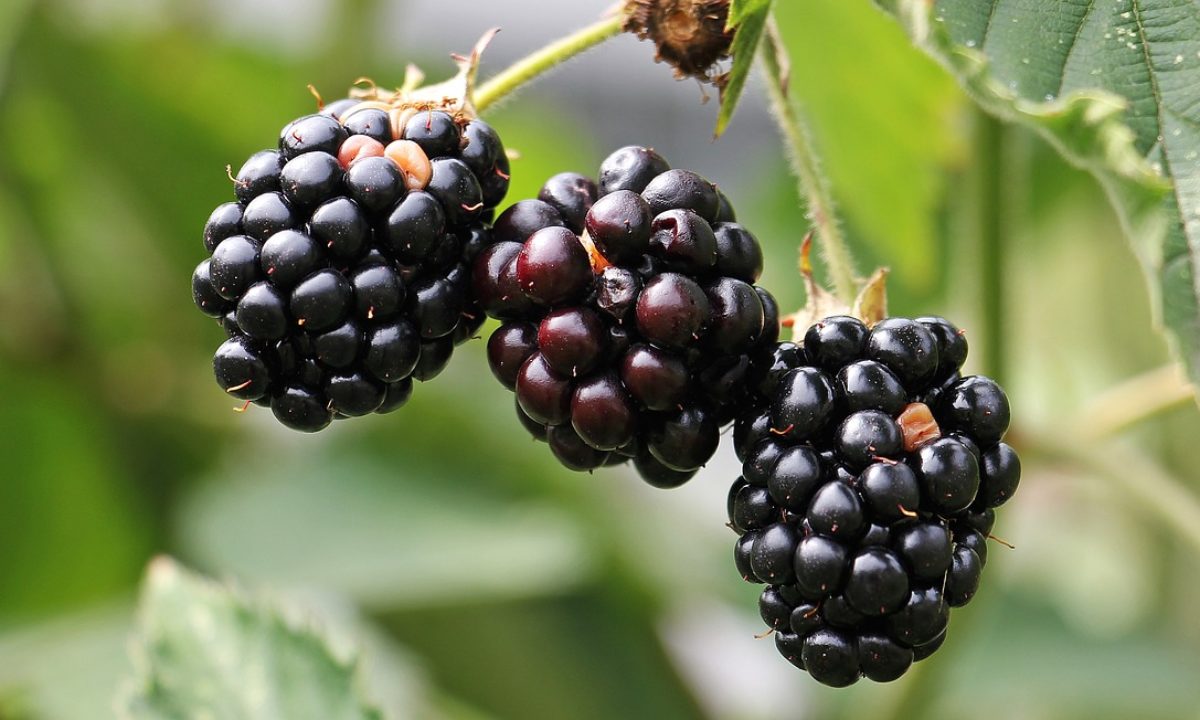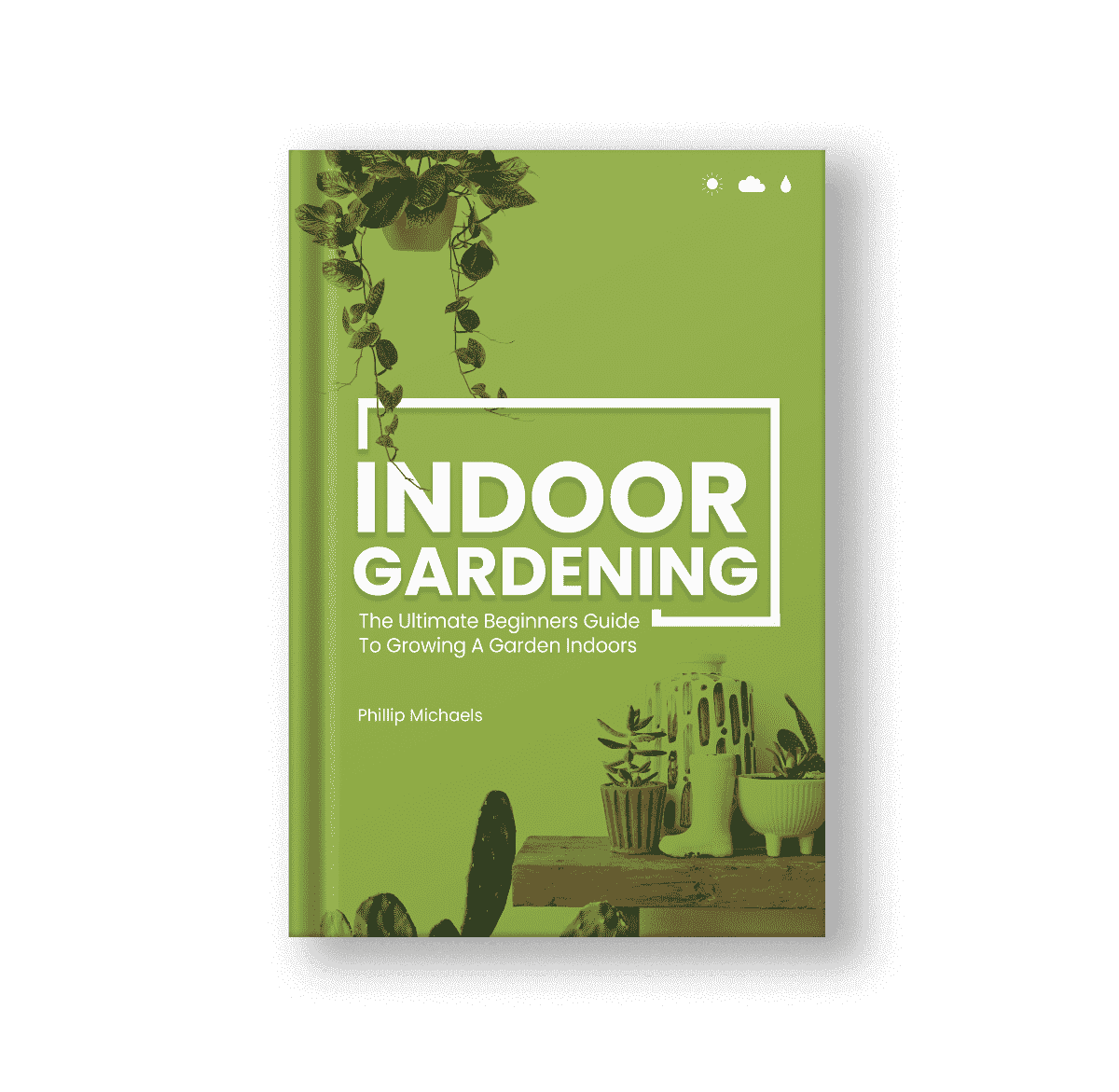Nothing beats the flavor and feeling of biting into a freshly picked blackberry. These little berries pack a ton of flavor and are the perfect addition to any garden. While usually grown outdoors, there’s no reason why they can’t be grown indoors too. With a little care and know-how, you can start growing blackberries indoors and enjoy fresh berries whenever you please.
Note that many of these tips will apply to other types of similar berries. We will however be going more in-depth on them if you are looking for more specific tips for each type of berry.
Blackberry Varieties and Planting
First, you need to decide the kind of variety of blackberry you want to grow. There are many blackberry varieites but they generally fall into two broad categories; the erect varieties that grow vertically and the trailing varieties that grow horizontally.
If you want to grow your blackberries in a pot, then choose the erect variety as they are easier to contain and will naturally fit better. Trailing varieties are better when you have a large area, like an outdoor garden box. Either one can technically be grown indoors, but we recommend going with an erect variety as they need less space to thrive.
Another term you might see is “erect dwarf“. This is a specially bred variety of the erect variety that will not grow too large. This makes them perfect for indoor growing and is the best choice if you can find one.
Preparing the Container and Soil
The most important thing when looking for a blackberry container is the size. Even with the more compact erect varieties, you’ll want one that is at least 12” in diameter. Going a little bigger also doesn’t hurt, and serves to add extra room for plant growth. Make sure your chosen container has drainage holes, and add some if it doesn’t.
The quality of the soil is also important as it provides all the nutrients for the plant. Go with high-quality, well-draining potting soil, most commercial brands will work fine. Blackberry plants grow best in slightly acidic soil. So, 5.5 to 7.0 is the ideal pH range the soil should be between. Choose a soil in this range, or use additives to reach the proper range.
Planting
With planting you have two options, starting with blackberry seeds or saplings. Saplings are generally easier and quicker, but we’ll look at both to give you an idea of the effort involved. In both cases, it can also be helpful to add some trellis or other support to keep your plant upright and healthy.
Growing Blackberries from Seed
If you choose to start with seeds, fill your container with soil and dig a few small holes that are about 1/2” deep. Scatter your seeds in these holes, and then cover them with a layer of soil. Water them thoroughly afterwards.
It’s a good idea to start multiple plants at once in case some don’t make it. Once you do see the sprouts peaking through, and they grow their first set of leaves, you should space them out to give each plant about 12” of space. If you have a very large container you can leave them as is, but in most cases, it’s best to move each plant to its own container. That way they each have enough room to grow and don’t have to compete for resources.
Starting With a Sapling
If your choice is to plant a sapling, start with a good quality blackberry sapling from a nursery. Dig 6 inches deep into the center of the pot, or large enough to fit the root ball of your sapling. After carefully removing the wrapper, trim any roots that look unhealthy and slowly place the plant into the pot. Gently pat the soil onto the roots until they are properly covered. If you want to plant multiple saplings, plant each one at least a foot away from the other, and once again, one pot per plant is a good rule of thumb. Slowly water the soil around the sapling till it feels damp and water begins to leak from the drainage holes.
Sunlight and Location
Like many fruits, and other berries, blackberries are a high-light plant. Shoot for a minimum of 8-10 hours of sunlight per day. That’s at a minimum, an hour to two more will almost always be beneficial.
If you cannot find a spot like that, you can also use well-positioned grow lights. Grow lights are an excellent way to get your plants more light, especially during winter when certain climates get far less sunlight during the day.
Winter Lighting
Also, take care to monitor your plant during the winter. In general, winter months have less intense sunlight meaning your plant will need more time to receive enough light. It’s not a bad idea to give the plant extra time in the light or use the above-mentioned supplemental light during these months. Many gardeners will set up grow lights during the winter, but remove them when the sun becomes more intense in the summer.
You should also look to protect your plant from sources of heat and cold. Blackberries do well in typical indoor temperatures of around 60-75°F. In particular, avoid exposing them to freezing temperatures and frost as this will kill your plant. Make sure to bring them indoors during the cooler months, and keep them away from any sources of big temperature variations like drafty windows, heaters, or HVAC vents.
Watering
Probably the biggest reason people have trouble growing blackberries is not watering correctly. Both under and over-watering blackberries can be harmful, so it’s important to water them correctly. Luckily, blackberries are fairly hardy so you don’t have to be overly careful.
A general rule of thumb is to water the plant when the top layer of the soil starts to look dry but has not completely dried out. You can check by feeling the top inch or so of the soil. If it’s dry then it’s time to water. If it’s still moist then you can wait until it’s dry. I try to check this at least every other day to ensure my plant doesn’t go too long without water. Remember, the warmer it is and the more sunlight the plant gets the more often you’ll have to water it, so keep that in mind when planning your plant’s care routine.
To water, slowly pour water till the top 2-3 inches of soil feels wet. You can determine that by pushing your finger into the soil after the water has been absorbed. You can also look for water to begin to slowly leak out of any drainage holes in your plant’s container. Once it begins leaking that generally means the soil is saturated and doesn’t need any more water; this method also saves you from having to dirty up your hands which I personally like.
Feeding
Blackberries are not super heavy feeders, but it’s still a good idea to feed them during their growing season. I tend to do so about once per month during the summer with a balanced fertilizer. Look for a 10-10-10 fertilizer or a 5-5-5.
I tend to use a liquid fertilizer but dilute it down to about half-strength. Another good option is slow-release fertilizers as these can be placed at the beginning of the season. You can also use homemade compost, which is a great, natural way to add nutrients to the soil without using harsh chemicals. This is my preferred method when available with the added benefit that it saves you money.
Harvesting Blackberries
It takes about a year for blackberry plants to mature and start growing actual berries. After all your patience and hard work, when the plant begins to bear fruits, it is time to pluck them out. The right time to harvest the berries is a day or two after they turn black in color. Blackberry fruiting season begins in late spring and extends into mid to late summer. Expect to do most of your harvesting during this time.
Wait till the blackberries soften a bit and pluck them while they look plump and shiny. As you pick the blackberries, prune back the branches to allow more growth in their place.

Freshly Harvested Blackberries Ready To Eat!.
Yearly Harvests
Once you pick your berries and prune the branches, the emerging growth will produce more fruits next year. Don’t underestimate the importance of pruning as it provides room for the new stems to produce berries. Even if you don’t eat all the fruit take the time to prune back the stems. This step is key to long-term growth. Blackberry plants can live up to a whopping 40 years, so with proper care, a single plant will gift you plenty of delicious fruits to harvest year after year
Propagating Blackberries
Blackberries are easy to propagate and this can be done in early spring. Simply take a cutting from the stem of a healthy plant that is about 4-6”. Then, place this cutting into the soil and keep it in a warm, sunny location. Give it a healthy dose of water when you plant it that soaks the soil completely. I like to start my cuttings in smaller containers so that I can grow multiple at the same time, and move the ones that survive later.
It takes about 2-3 weeks for the cutting to grow roots. You can test this by gently pulling on the cutting. If there is some resistance, then it means the cutting has rooted. At this point, you can move the plant to a larger container if needed.
If you find your cuttings are not rooting then try using some rooting hormone. This can help speed up the rooting process, and I recommend it, but isn’t strictly necessary.
Growing Blackberries Indoors
While blackberries are not the easiest plant to cultivate indoors they are well worth the effort. Biting into a home-grown Blackberry is a unique experience of its own. Nothing beats the delicious flavor of fresh, home-grown blackberries, and growing them on your own only adds to that enjoyment. I don’t know what it is, but eating a fruit you’ve grown yourself is always so much sweeter than store-bought.







